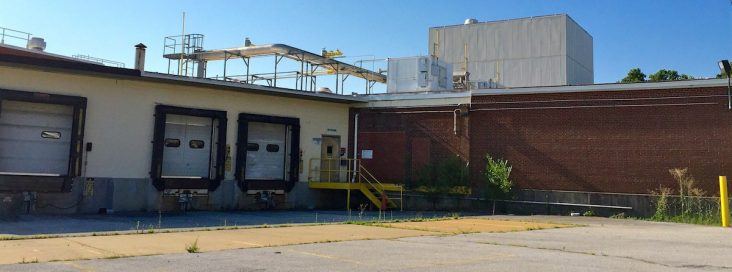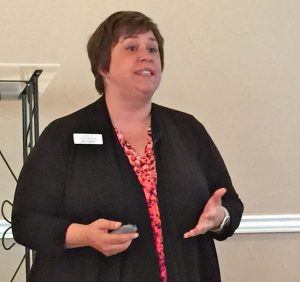’The Plant’ at Crystal Bridges in downtown Bentonville designed to deliver ‘art of your lifetime’
by July 19, 2016 4:30 pm 1,488 views

The 63,000 square-foot former Kraft cheese plant in downtown Bentonville and the surrounding nearly 5-acre complex will eventually become an extension of Crystal Bridges Museum of American Art focusing on contemporary, living art. Work on the project is estimated to be complete by early 2019.
Living, contemporary art combined with a co-working space for professionals and the latest in culinary cuisine are all expected to be part of “The Plant” in downtown Bentonville by early 2019.
The Plant is the unofficial name of the former Kraft Cheese facility located in the city’s Market District which will become an annex of Crystal Bridges Museum of American Art thanks to a multi million dollar grant from the Walton Family Foundation. Details of the grant and the project budget are still being worked out, according to foundation spokesman Luis Gonzalez.
The nearly 5-acre industrial complex and surrounding green space even in its raw state has museum officials excited about the possibilities. Walton family heirs Steuart and Tom Walton purchased the plant in May 2014 for $1.45 million with a goal to fill a gap in the local art scene. Their limited liability company, Food Hub NWA, also is spearheading the renovation of the former Tyson Foods fry plant located a couple of blocks away which will house the new $15 million Brightwater culinary school, another investment supported by the Walton Family Foundation.
Niki Stewart, chief engagement officer at Crystal Bridges, is overseeing the expansion of the arts. She told a group of business professionals at the Bentonville-Bella Vista Chamber Business Matters breakfast on Tuesday (July 19) that the wildly successful contemporary exhibit “State of the Art” which displayed at Crystal Bridges between 2014 and 2015 was the catalyst for this new venue. That exhibition featured 102 living artists who came to Bentonville to display their work.
“We loved it. Crystal Bridges came alive and afterwards we wanted to keep that fresh, excitement going and this building was available,” she said.
Stewart reminded the group that when Crystal Bridges opened Nov. 11, 2011, it was not completely finished and the project was some three years behind schedule.

“We have not been afraid to evolve in front of your eyes and that has been one of the reasons the museum is so successful,” Stewart said. “We don’t know exactly how long it will take to open The Plant but we expect it will be late 2018 or early 2019. We see these two art venues as siblings that will grow up together.”
Stewart said the new 63,000-square-foot extension to Crystal Bridges is another way to make living art accessible to the masses, which is an important mission of the museum.
“The goal is to make the art of your lifetime accessible. There will be three pillars with this project – visual arts, performing art and culinary arts. Think of the possibilities that could happen when a sculptor, a dancer and a chef share the same working space,” she said.
Tom Walton has said his vision for the space is broader, current and messier definitions of art that may inspire the next generation of artists and art patrons.
“Our family is committed to giving back to the place where we grew up,” said Tom Walton. “Surrounded by urban trails and new culinary offerings, this experimental concept will complement our work in Northwest Arkansas – raising the quality of life for all residents, especially the millennial generation.”
Walking every inch of the expansive facility, Stewart says she’s learned far more about cheese manufacturing than she thought possible. Stewart plans to keep many industrial fixtures and make them part of the canvas where artists gather to work. There is a large open area with four bays where trucks dropped off the milk. Stewart visualizes that as a performing arts studio, or a place where films can be shown, noting that it’s difficult to show films at Crystal Bridges as it’s comprised largely of glass.
Stewart said she has worked on the plan for nearly two years and has barely scratched the surface. Crystal Bridges is working with Wheeler Kerns Architects of Chicago on the design. She said they are experienced in adaptive spaces. Stewart said design work has drawn some inspiration from the Massachusetts Museum of Contemporary Art which is housed in a former textile plant. The two museums plan to continue to collaborate and share ideas through the renovation phase and beyond.
At the very core of the Crystal Bridges expansion project is the desire to recruit and retain artists to live and work in this community. Stewart expects Millennials will be the biggest demographic patron of the art extension. She said the center will attract all ages at various times, but she believes entrepreneurial Millennials will congregate there and it might be their new favorite coffee shop or where they hang out after work.
“While Crystal Bridges Museum is considered a quasi formal venue, The Plant will be comfortable and casual,” Stewart said.
The venue also sits along the heavily used Razorback Greenway trail system so patrons may bike there and it’s only a few blocks from the downtown square. In keeping with the foundation’s mission to enhance the quality of life in the region, Stewart said The Plant will add another layer of art to that already provided by Crystal Bridges, Amazuem, Walton Arts Center, Theater Squared and others.
“We don’t seek to duplicate programs already in place, but find ways we can fill the holes or enhance some programs through collaboration. One area mentioned was the Brightwater culinary school, which will be a neighbor. She said the chefs coming to and from that school will be culinary artists who may get opportunities to show off their talents at The Plant.
Local artist Zeek Taylor, who has lived and worked in Arkansas his entire life, said what Northwest Arkansas is doing to support and share the arts is unprecedented. Earlier this year Taylor was hired as the art curator for the new First National Bank NWA branch under construction on S.W. A Street in downtown Bentonville in the neighboring Arts District. The branch will feature art collections in its front windows for those patrons who ride or walk the Razorback Greenway to and from downtown Bentonville.
